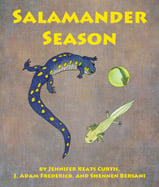Alignment to Standards for VT

| Grade | Number | Standard |
|---|---|---|
| 1,2 | S1-2:30a. | Living things (plants and animals) are made of parts that enable survival. |
| 1,2 | S1-2:31a. | All organisms undergo stages of development that include being born, developing into adulthood, reproducing and dying. |
| 1,2 | S1-2:31b. | Most organisms come from male and female parents. |
| 2,3 | S3-4:30 | Explaining how the physical structure/characteristic of an organism allows it to survive and defend itself (e.g., The coloring of a fiddler crab allows it to camouflage itself in the sand and grasses of its environment so that it will be protected from pr |
| 2,3 | S3-4:30a | Organisms have physical characteristics that help them to survive in their environment. These structures enable an organism to: defend itself, obtain food, reproduce, eliminate waste. |
| 2,3 | S3-4:31 | Investigating and describing a variety of plant and animal life cycles. |
| 2,3 | S3-4:31a. | Although all organisms have common stages of development, details of a life cycle are different for different organisms. |
| 2,3 | S3-4:35.1 | Researching and designing a habitat and explaining how it meets the needs of the organisms that live there. |
| 2,3 | S3-4:35.1b. | Organisms can survive best only in habitats in which their needs are met. |
| 2,3 | S3-4:36 | Explaining how one organism depends upon another organism to survive. |
| 2,3 | S3-4:36a. | Organisms interact with one another in various ways besides providing food Many plants depend on animals for carrying their pollen to other plants for fertilizing their flowers). |
| PK-K | SPK-K:34a. | Plants and animals both need water, food, air, and space. |
| PK-K | SPK-K:38 | Sorting and identifying examples of plants and animals. |
| PK-K | SPK-K:38a. | Some living things (organisms) are identified as plants or animals. |